Here’s a look at the untold stories of Odisha’s sea traders and brave sailors, and how the region became a maritime superpower to influence empires and trade across the globe.
Bali Yatra is an annual festival celebrated in Cuttack, Odisha. It is observed in the time of Kartik Purnima (late October-early November), which is the time when the monsoon winds turn southeast. This was the time ancient mariners and traders from Bengal and Odisha would take off on their nearly six-month voyage to distant destinations, most commonly Bali, Java, Sumatra, Cambodia and Vietnam. Their families would gather at the shore to bid them farewell and pray for their safety on the high seas and foreign lands.
At present, when people gather at the banks of the Mahanadi river, float paper boats and sing songs, it is to remember and commemorate Orissa’s rich maritime history. They also light sky lanterns as a symbol of good wishes for the sailors. This festival is also associated with Tapoi.
The legend of Tapoi comes from a very famous folk ballad. The story goes that a family of seven brothers, all of them sailors, had a beloved youngest sister. In due time, they got married. When they were abroad, the wives would mistreat their sister, and thus she yearned for them to come home. However, the wives were caught by the brothers red-handed and disowned. Tapoi thus acknowledges the family members who suffered when their loved ones went overseas.
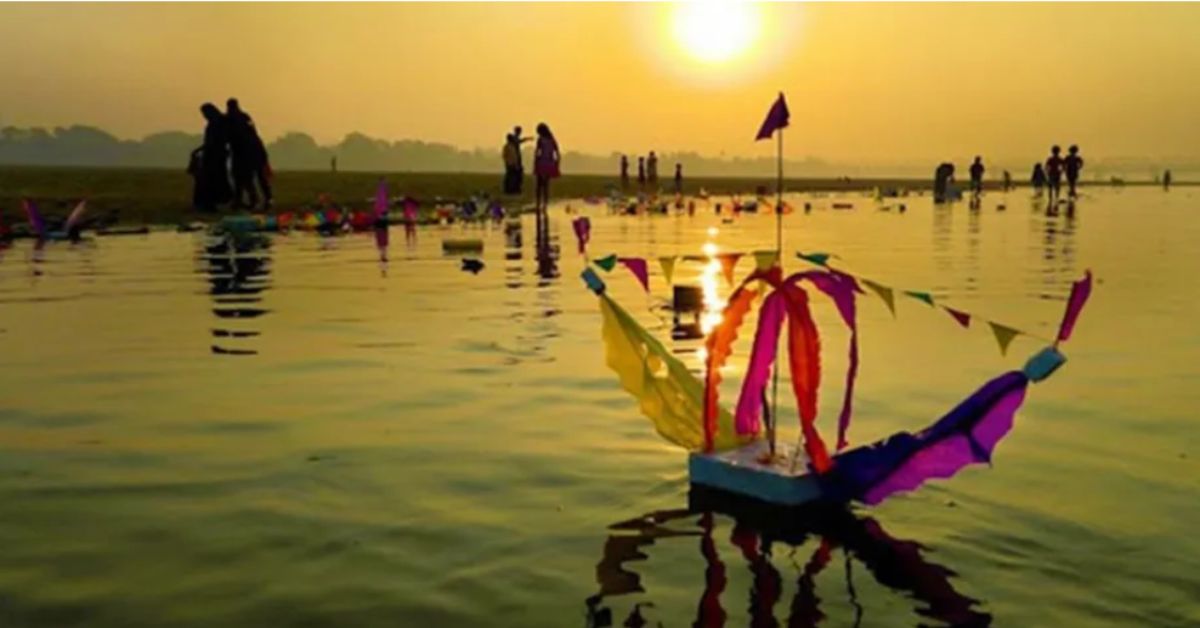
This festival has commemorated more than a thousand years of rich maritime history, in remembrance of swashbuckling sailors who sailed to far off lands; ostensibly for trade, but mostly for the adventure and thrills of the high seas, and a chance to meet people and cultures different from their own. These sailors were awe-inspiring figures back home, and countless works of literature and folklore have been dedicated to them and their various adventures and misadventures.
Of ballads and bravery
Folklore is one of the most overlooked sources of history for several reasons, chief among them being that it is not objective. In a land like India, history was usually transmitted through word-of-mouth, through ballads, dances, folk theatre, bard stories and shlokas. Kings, sages, merchants and courtesans were eulogised and mythologised over thousands of years of continuous and chaotic history, to a point where it is difficult to sort fact from fiction. They still have their importance when we study our ancestors, however.
Historian Supriya Sahoo stated, “Because stories create reality, stories of a people, by a people, must be taken into account for an informed understanding of each community.”
Folklore is an important signpost in the winding and confusing pathways of history and can provide various clues and insights that formal records cannot.

The Kalinga empire had always been powerful and influential and is mentioned in texts as ancient as the Ramayana. Kalinga’s grip on ocean trade was well known — in Kalidas’s monumental play Raghuvamsa, he refers to the king of Kalinga as Mohodadhipati (king of the Ocean). In fact, he is called the king of the seas in several ways in various texts — Sarala Das’s Odia Mahabharat and Yosawant Das’s Tika Govind Chandra are just a few examples.
Travel writings, put together by poetic souls and practical merchants alike, enliven the ancient trade routes with anecdotes, stories and practical advice. Odia literature is especially rich with accounts of travel — the famous epics Lavanyavati and Vaidehi Vilasa (Upendra Bhanja) speak about voyages.
Rasakallola by Dinakrushna Das has stories of shipwrecks by sea storms, and Kavya Parimala by Narasimha Sinha references Kalinga’s trade with Sri Lanka. The Odia version of the Mahabharata also has accounts of ship-building. Perhaps the most poignant tale related to Odisha’s rich mercantile history is, of course, the ballad of Tapoi. This ballad is not only a tender story of filial love and the pain of separation, but also a rich repository of information about the culture, customs, trading methods and widespread exposure of that time.
Why was Odisha such a maritime superpower?
The geography of Odisha’s coast is especially conducive for sea trade. There are plenty of natural harbours and deltas that were advantageous for setting up ports. An abundance of rivers, such as the Ganges, Mahanadi and Godavari, were great for bringing goods from inland far easier than by land.
The mountains of western Odisha were also rich with precious and semi-precious stones, which were valued commodities for export. Some of India’s most bustling ports were located along the coasts of Kalinga — Tamralipti and Chandraketugarh (in modern-day West Bengal); Nanigaina (modern Puri), Katikadarma (modern Cuttack), Kannagara (modern-day Konark); and Salihundam and Dharanikotam located in modern Andhra Pradesh.
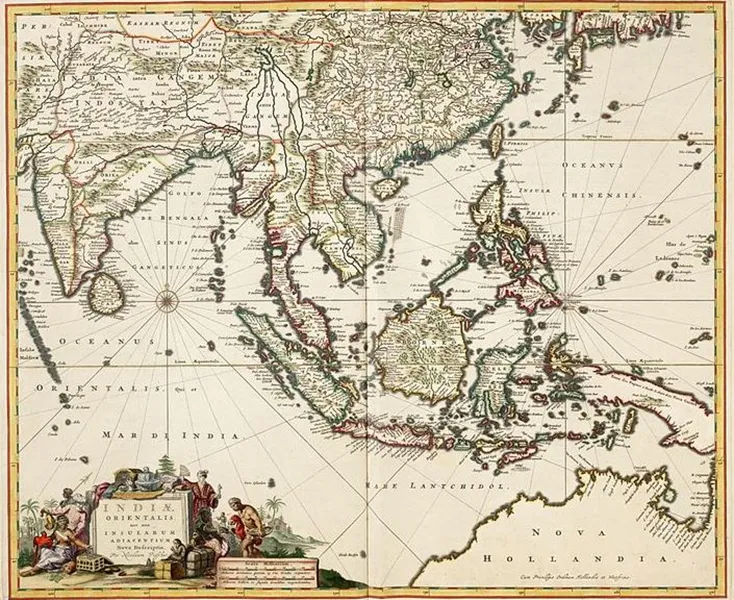
Some of these ports had periodic rises and falls, and some endured for a long time. Some of them were used for international trade, while others were used to travel along the Indian coastline for internal trade.
Travel was mainly contingent on the strength and direction of the monsoon winds, which is why merchants set off when the monsoon winds turned to the southeast — their departure marked by the Bali Yatra.
The routes they took are well documented in Periplus of the Erythrean Sea and the accounts of Chinese monks who came to India to study Buddhist texts. Ships from Orissa heading to Southeast Asia made a stop for picking up supplies, resting and/or trading either in Sri Lanka or in the Andaman-Nicobar islands.
According to the account of I-Tsing, the journey from Tamralipti to the Nicobar islands took about a month. From there, they caught the southern monsoon winds and sailed across the open sea to Sumatra. From Sumatra, they had three options — sail down the coast of Sumatra, all the way to Java and Bali; trade along the coast; or cross the narrow Malacca Strait, and then either go north towards Cambodia, Vietnam, China and Japan, or south to Borneo, which was famed for its spices and a closely guarded secret by Indian
merchants.

A few Odia-Bengali merchants also travelled to the eastern coast of Africa and Rome — the west Indian ocean trade was, however, dominated more by the Tamils and the Gujaratis. It was a dangerous journey, fraught with storms and shipwrecks. But Indian merchants built cordial relationships among the locals and often settled down. A lot of them won the local kings’ favour and became advisors, or started royal dynasties themselves by marrying into royal families. The dharmic culture bought by Indians mixed in harmoniously with the local culture and became a rich tapestry that still forms the national consciousness of the modern nations of Southeast Asia.
The links that bind
There is a lot of evidence of trade between India and Southeast Asia, which was known as Suvarnabhumi (land of gold) by Indian sailors. The lands of Suvarnabhumi were fertile and the culture was rich.
The main trade between Kalinga and Suvarnabhumi were spices, ceramics and cloth — especially Kalingam, speciality blue cotton cloth of very high quality. A lot of items were also manufactured specifically for the needs of customers abroad, which shows that some craftsmen made goods only for exports, and had a good understanding of the culture of their target markets. For example, bronze bowls with a knob at the bottom, commonly used in burial rituals in Thailand, are similar to those found in coastal Odisha as well.
Rouletted ware, for example, is a special type of ceramic that was fairly common during ancient times and has been found all along the Indian Ocean rim and Southeast Asia — all the way from Vietnam, to the coastal areas of India, to the Middle East till Rome. Arikemadu in Andhra Pradesh seems to be a major manufacturing site of such wares, and these were exported from Kalinga’s ports to Java, Vietnam, and Bali.
The semi-precious stone and beads trade was quite vigorous as well, and were mainly used in decorations and jewellery all over Asia. As with any items popular with women, large quantities of beads were exported in all directions in the Indian ocean. Glass, camelian, agate and terracotta beads of similar make and composition have been found in Odisha, Myanmar, Malaysia, Thailand, and the Philippines. Camelian beads are most likely to be from India, as at the time India had abundant supplies of chameleon.
Coins with the images of ships have been found all along the coasts of Bengal and Odisha. Roman coins issued by different eras of rulers, such as Constantine and Tiberius, have been found all over the east coast of India. Chinese coins, with hanzi characters and a hole, punched in the middle, have also been found in ancient commercial centres, indicating a flourishing trade with the Far East.
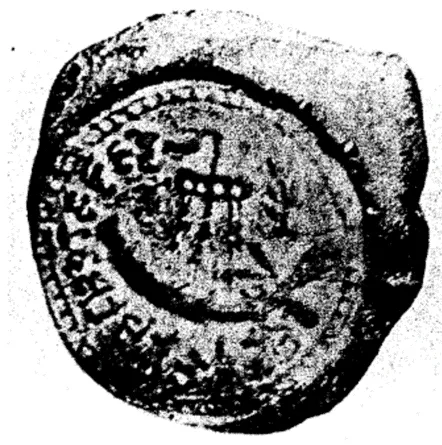
Indians abroad in ancient times
Indians often settled in Indonesia, Thailand, Cambodia and Malaysia, with a settlement even in the important Chinese port of Guangzhou. The merchants who settled in Suvarnabhumi seamlessly merged their culture with the local people, and quickly caught the attention of kings. They gained positions of power in the administration and popularised the Hindu and Buddhist religions. Sanskrit was quickly adopted by scholars and ministers of Suvarnabhumi. I should mention that all of these exchanges of culture were not forced upon the people; they adopted religions, languages and traditions on their own and created something unique and beautiful that endures to the present day.
Pieces of pottery and seals found in Chandraketugarh have Kharosthi script on them, indicating they are from Gandhara (present-day Afghanistan). They have carvings of ships and shells on them and seem to portray the ships that set sail from the ports in the east of the subcontinent. Ashoka’s edicts also mention trade voyages from Kalinga to the East.
Epigraphical evidence from Malaysia and Indonesia talks of a people called the Kling. There is consensus that they referred to the people of Kalinga. The tablets also mention that “the king of Kling sent twenty thousand people here. They settled and prospered well.” The Indonesian Telaga Batu inscriptions also speak of the skills and bravery of Indian sailors, such as the Puhawang (ship captains), Vaniyaga (sailors) and Sthapaka (sculptors). The word Banigrama was also used to refer to offshore branches of Indian merchant guilds that operated at every major commercial centre in Southeast Asia.
The Odia King of Cambodia
The story of the founding of Southeast Asia’s first Hindu-Buddhist empire is also thought to go back to Kalinga.
The Funan empire in Cambodia was one of the first great empires of South-East Asia with extensive Indian connections in terms of trade, culture and administration. It was founded by the Naga princess Queen Soma (Neang Neak) and her husband, Kaundinya I (Preah Thong).

According to Chinese records, Kaundinya was a Brahmin merchant ship captain who was shipwrecked on the coast of Cambodia. Queen Soma went to fight off the crew as she thought they were invaders, but fell in love with Kaundinya and proposed marriage. The House of Kaundinya followed matrilineal succession.
Most Hindu-Buddhist empires trace their lineage to Kaundinya. Since Kaundinya was a Shaivite, the royal religion of the Funan Empire was Shaivism. Several Shiva temples with Sanskrit inscriptions have been found in the region which was once the Funan empire. The dynasty had 18 rulers, of whom Jayavarman, the 17th king, was the most famous.
Rudravarman was the last king in the empire. There are no Indian records of King Kaundinya of Cambodia. However, noted economist and historian Sanjeev Sanyal has proposed that Kaundinya refers more to the gotra (lineage) of Kaundinya I. At the time, the Kaundinya lineage had settled extensively in Bengal and Odisha. Odisha had extensive trade relations with Vietnam and Cambodia. So, it’s quite likely that Kaundinya hailed from Odisha.
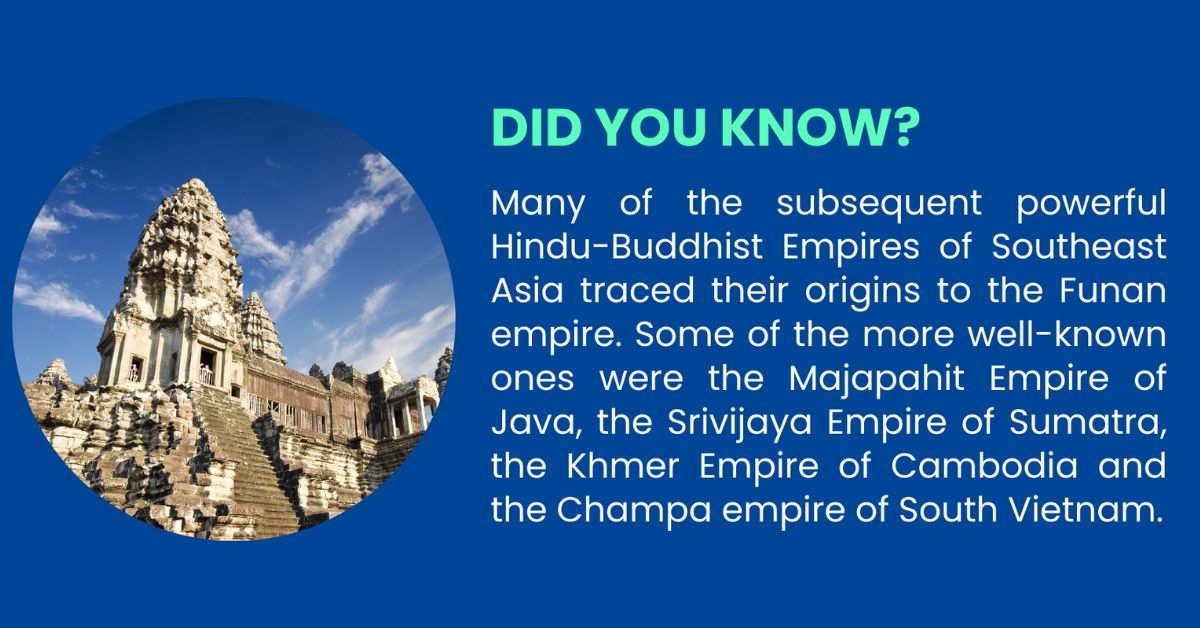
Untold history
Unfortunately, the central narrative of history in India (or at least in Indian schools) has a very clear bias towards the happenings in Central India, especially centred around the modern capital Delhi.
One might have the mistaken impression that India has a fairly linear, uncomplicated timeline of history — the supposed and mostly mistaken “Aryan Invasion”, the Mauryan Empire, the Delhi Sultanate, the Mughal Empire, the British and then Independence. Kalinga is a mere footnote in the story of King Ashoka’s personal transformation.
The history of India is, quite frankly, a chaotic mess, and is all the more interesting, glorious and beautiful for it. For a start, it is essential that we highlight the story of the coasts of India, the brave sailors who crossed tumultuous seas, unsure of their return, and India’s soft but powerful cultural influence over Asia and the Roman empire for the better part of a millennium.
It is extremely important to reiterate that Indian settlers never imposed their culture on anyone, and Indian culture was willingly adapted and moulded in unique ways by the local people of different lands all over Asia. And that was what made India’s influence and power so enduring — the ability of the ancients to embrace the entire world as a family, Vasudheiva Kutumbakam (the world is one family).
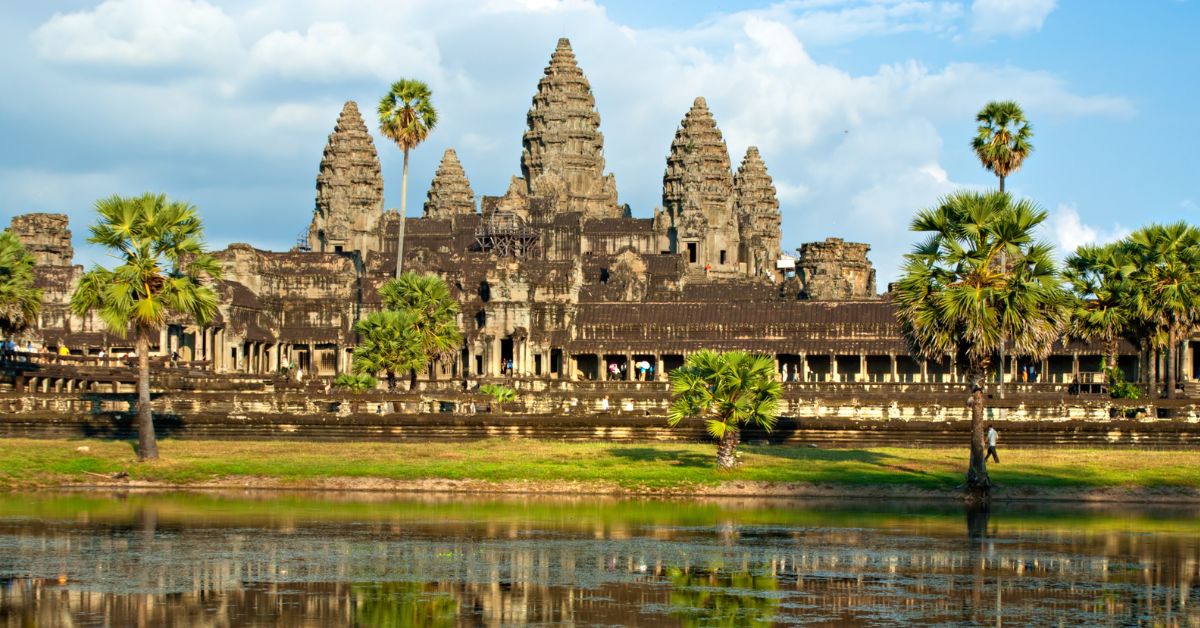

:format(webp)/cdn.vox-cdn.com/uploads/chorus_image/image/71167470/recode_remote.0.jpg)